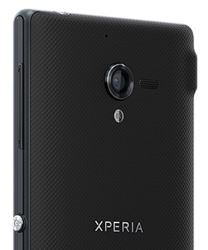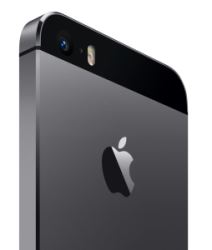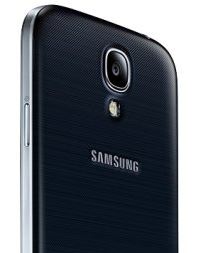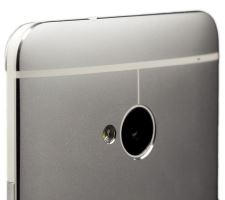Top 5 camera phones
Camera quality on the mobile phones we carry around with us has increased at a phenomenal rate over the last few years. When the first camera phones came out, it was nigh on impossible to make out what the grainy, low resolution, noisy mash of pixels was meant to represent. however, nowadays it is becoming more and more common for people to leave their compact camera at home and rely a mobile phone to capture photographic moments instead. Phones like the Nokia N95 really pushed the envelope with high quality optics and dedicated shutter buttons to make taking good-looking phones on a mobile phone more of a breeze than ever.
In fact, it wasn’t all that long ago that we saw the release of the first generation of digital cameras. Just a few years later, mobile phones offer unrivalled improvements in resolution and clarity. But which handset is going to give you the best shots? Which phone will give your Facebook selfies the most likes? Who is top dog of the camera phone kennels? Join us for our run-down of the five best smartphone cameras in the world right now.
5. Sony Xperia Z
Sony has probably got more experience in the digital camera world than any other major smartphone manufacturer. The camera on the Xperia Z uses the same 30 megapixel sensor as in their digital SLRs.
As for features, the camera can produce decent quality 1080p videos as well as HDR stills and panoramas without extra software. Of course, there are also a variety of digital filters and effects you can apply to your shots. The shots look good and have consistent saturation and exposure but the optics could be better.
4. iPhone 5S
The iPhone 5S‘s camera includes a dual-colour LED flash for better skin tones, a huge f/2.2 aperture and a bigger sensor than before. It also has the Apple A7 chipset to help with image processing. Unfortunately it is still lacking image stabilisation.
Of course it also features like an improved panorama mode and the ability to add a slow-mo effect to your videos using the phone. The HDR photography mode seems to work really well, producing nice wide shots with minimal effort.
In terms of performance, the lowlight photos are better than we expected; probably due to the large aperture size. The flash is certainly an improvement on the previous tone-reproduction qualities but there’s still plenty of room for improvement. We are glad to see that overexposure is less of an issue now though. Unsurprisingly, a very decent effort from Apple’s flagship.
3. Samsung Galaxy Note 2
Coming in at in third place is the Samsung Galaxy S4. It’s packing a massive 13 megapixel autofocus main camera which can handle full HD video at 30 frames per second.
As you would expect with Samsung, there’s a wealth of options available when using with the camera (not all of which you might want to make use of on a regular basis). However, some of the most usable shooting modes include panorama, action and the HDR mode. Another fun one is the Eraser mode which composites multiple images to remove unwanted moving subjects from the background.
The image quality is great although you might have to do some manual white balance tweaks. We’ll also impressed with the reaction time of the shutter. Our sample images look great and the colours in our shots came out well-exposed, rich and sharp. It also massively useful to have an expandable micro-SD card slot to hold all the photos you take especially due to the large resolution.
2. HTC One
Don’t be fooled by numbers and statistics. Even though the HTC One only claims to have a 4 megapixel camera, the “ultra pixel” sensor size is much larger than average and each pixel can capture more light and hopefully produce better quality results. The sensor is also coupled with a very fast f/2.0 aperture at a nice, wide 28mm focal length.
Taking photos with the HTC One is a pleasure mainly due to the excellent and bright screen which really makes it easy and clear to see how the shots are being framed and how they turn out. There are the usual shooting options such as various scene choices, night mode, panorama mode and the now-ubiquitous HDR.
In practice it seems the marketing guff around the “ultra pixel” sensor may well have some substance behind it. We were very impressed with the quality of the shots even when compared to the other phones in this shootout. Our photos came out really well especially at high ISO sensitivities – this is probably another of the benefits of the large sensor. The phone feels great in the hand when taking photos and images are crystal clear sharp.
1. Nokia 808 PureView
Finally, we get round to the winner of this test and it won’t surprise many to hear that it’s the Nokia 808 PureView. Hailed as a revolution in the camera phone arena, Nokia have packed a massive sensor into this phone that is capable of producing 38 megapixel images. Yes that’s not a typo – you read that right: Thirty. Eight. Megapixels. Astounding!
Of course, it takes more than just pixel count to produce good quality images, and thankfully Nokia have coupled their sensor with high quality Carl Zeiss optics. The aperture is nice and fast at f/2.4 and because of this it produces great images in low light conditions. The Xenon flash is also quite a powerful beast.
In general, the photos really look great – crisp and sharp and every pixel well exposed. Simply put, the quality of photos from this phone blow away those from its rivals. The huge sensor and a high-quality lens pretty much unparalleled in the smartphone arena. The only issue we have with this amazing piece of kit is that would have liked to see more options for manual control over the various exposure settings.










